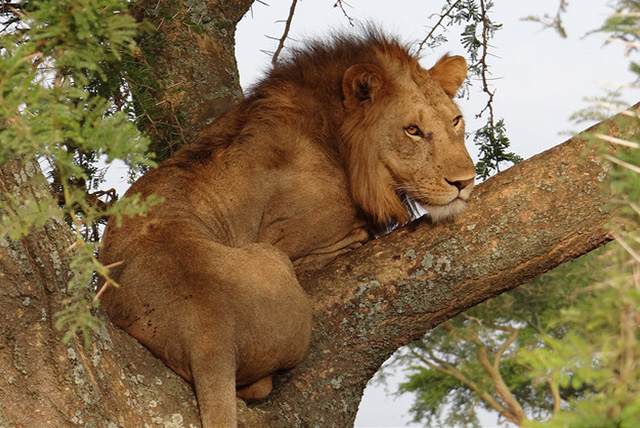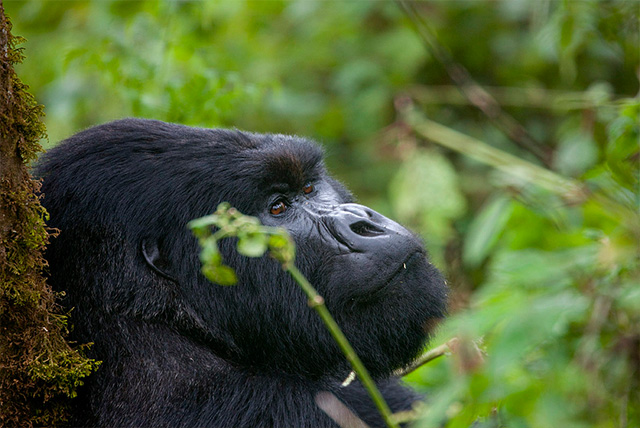Lake Tanganyika
Lake Tanganyika Exploration, Insights, Map, Dimensions, Depth & Experiences
Lake Tanganyika: Explore its Safari, Discover Fascinating Facts, Navigate the Map, Understand its Size and Depth, Engage in Activities, and Uncover Unique Characteristics – Following Siberia’s Lake Baikal, Lake Tanganyika ranks as the second-deepest and second-largest lake globally. It spans across four nations: a tiny slice in Burundi and Zambia, with roughly 40 percent nestled in the DRC and Tanzania.
Lake Tanganyika, nestled in Africa’s Great Rift Valley, boasts a history of approximately three million years and is nourished by over fifty diverse rivers and streams. Due to its age and relative isolation, it now stands out as one of the world’s most ecologically diverse and scientifically valuable ecosystems. Lake Tanganyika, holding 8 percent of the world’s freshwater, is alive with an abundance of fish. Nearly all of Lake Tanganyika’s fish, however, steer clear of the chilly, oxygen-poor depths and prefer to inhabit the warm, upper waters.
The Truth About Lake Tanganyika
Kigoma, a vibrant town, sits along the edge of the lake, inviting exploration and excitement. The Mahale Mountains National Park and the Gombe Stream National Park, both nestled in Tanzania, attract visitors with their inviting proximity to the lake.
Alongside a diverse array of primates, vibrant forest birds, and dazzling swarms of butterflies, both parks are renowned for their populations of friendly chimpanzees. Every park presents unique lodging choices, with Mahale showcasing an incredible resort by the lake. While they may not be as readily reachable as Tanzania’s famous safari spots, these two protected areas offer captivating insights into the rich natural history of a celebrated biodiversity hotspot.
The 52-hectare Lupita Island in the southern part of Lake Tanganyika provides a range of accommodations too. Visitors can choose from a variety of thrilling experiences on land, such as trekking and exploring nearby fishing communities, or dive into exciting aquatic activities like diving, snorkeling, and sailing. Katavi National Park is also nearby and is celebrated as one of Tanzania’s best-kept safari secrets. Experience the thrill of the savannah alongside the lush wonders of the rainforest by merging an exhilarating big game safari in Katavi with a retreat in Mahale or Gombe.
Planning an Exciting Journey to Lake Tanganyika
We recommend pairing a visit to Lake Tanganyika with an exhilarating safari to track chimpanzees at Gombe or Mahale, along with exploring the lesser-known parks in Southern and Western Tanzania such as Nyerere (Selous), Ruaha, or Katavi.
Explore Tarangire, Lake Manyara, Ngorongoro Crater, and the Serengeti, where the wildebeest migration unfolds, as part of your journey through the captivating Northern Tanzania safari parks. Embrace your last days in Zanzibar by soaking up the sun on the beach and immersing yourself in the vibrant Swahili culture.
Activities at Lake Tanganyika
A journey to Tanzania’s Lake Tanganyika promises an experience unlike any other safari. It is breathtakingly beautiful, rich in captivating tales, and enveloped in intrigue. The lake serves as an essential connection between Tanzania, Burundi, the Congo, and Zambia, stretching 45 miles wide and extending 418 miles long. From your Tanzanian safari lake base, your Adventure In The Wild Safaris travel agent might arrange an enchanting dhow trip for lakeside dining, fishing, snorkeling, or swimming in the expansive waters.
Alongside kayaking and canoeing, you can embark on thrilling motorboat excursions to nearby villages and sites of historical significance. On extended journeys, the lake can be quite tumultuous and thrilling, with plenty to discover along the way. The lake is alive with jellyfish, terrapins, and over 400 species of fish, creating a vibrant ecosystem that attracts a variety of predators. Otters, fish eagles, cormorants, pelicans, kingfishers, crocodiles, and even snakes thrive in this dynamic environment, all drawn to the plentiful food source.
Taking a stroll along the lake shore feels like embarking on a delightful journey. This expansive inland sea, while lacking tides, is still influenced by the dance of evaporation, the whispers of the wind, and the flow of currents. The sand is adorned with stunning mollusc shells, making it feel like a vibrant coastal paradise. Artwork crafted from weathered, sun-bleached driftwood is quite prevalent.
As the sun rises, the fresh water draws in a variety of animals like warthogs, antelopes, leopards, and chimpanzees. Their tracks can be spotted in the sand, telling tales of their early morning visits. From the depths, small, tufted islands of reeds emerge. Breakwaters of tumbled rocks and thick foliage conceal dense undergrowth, guiding the gaze toward forested slopes. The far side of the lake is graced by a majestic line of towering mountains.
There are still countless enigmas woven into the lake’s geological past, waiting to be uncovered during your journey. It has undergone many changes over time due to its elevated position and significant depth, its location in a rugged volcanic landscape, a rapid evaporation rate, inconsistent water sources from the rivers feeding it, and fluctuating weather patterns.
To ascend from a depth of 300 meters beneath the current shoreline and flow out through the Congo towards the ocean, it depended on lava blockages that redirected the inflow from the Nile less than 12,000 years ago. Before that time, the lake experienced a fascinating cycle of connection and isolation with other Great Lakes in the Rift Valley area. This power source remains unpredictable. In 1858, British explorers Richard Burton and John Speke stumbled upon it during their thrilling quest to uncover the source of the Nile River.
The water in the lake has remained unchanged for an astonishing 6000 years, shaped by the lake’s dynamic currents and flow patterns. That’s why locals share tales of creatures like Nessie hiding in the lake, along with Gustave the gigantic crocodile, Pamba the lake monster, and Chipekwe, known as the “killer of elephants,” also referred to as Emela ntouka.
As a world treasure and a magical place where magnificent creatures, many still unknown to science, may be encountered by anyone on safari in this expanse of Africa (read more on when to visit Lake Tanganyika), recent studies have concentrated on creating a lake basin management authority to safeguard the lake and its wonders.
Reaching Lake Tanganyika is quite the challenge. Access is limited, with the paths in poor condition, turning travel on a rainy day into quite the challenge. Soaring through the skies in a small plane offers a thrilling sense of convenience. Landing airports can be found in bustling cities such as Kigoma, as well as at various hotels nestled near the lake. Traveling across Lake Tanganyika is essential for those looking to explore the Mahale or Gombe National Parks, as well as the islands in western Tanzania during their expedition safari.
Discover the best places to stay in Lake Tanganyika and make the most of the MV Liemba, a large passenger and cargo ferry that embarks on two-week-long journeys across the lake. It stops at various designated points to drop off passengers and cargo, before heading to charming coastal towns, villages, islands, camps, and lodges that can only be reached by small boats in shallower waters.
There are several smaller ferries that can whisk you across the water, but be prepared, as they do not come at a low price. With their own planes and boats, some of the more luxurious resorts will take care of your transportation costs by air and by speedboat. It is advisable to arrange all transportation ahead of time with your Adventure In The Wild Safaris tour specialist. The MV Liemba is a ferry that has been in service for a hundred years, boasting a fascinating yet contested history. Once called the Graf von Goetzen, this vessel was constructed in Germany in 1913 with the purpose of serving as a ferry on Lake Tanganyika.









